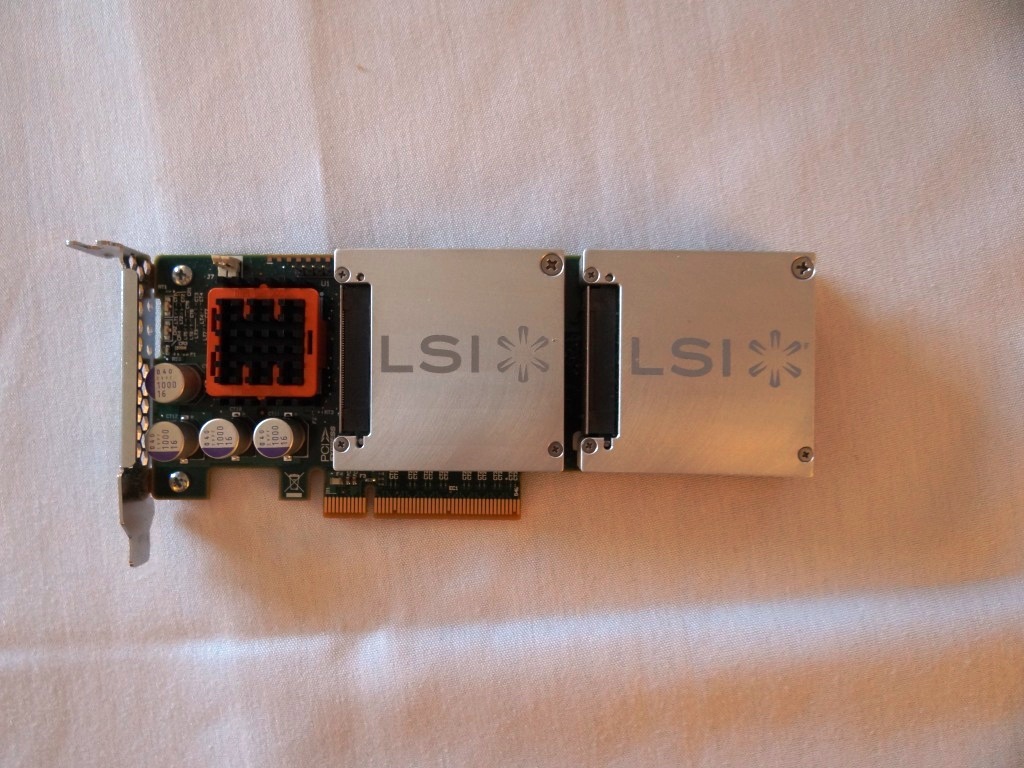There are a few key differentiators between the LSI solution and the Fusion-IO product. Fusion-IO is actually more of a niche product, as there is a great deal of host system offloading involved with its operation. The Fusion product relies on the host server that it resides in to handle all facets of its operation. The actual scaling and computations involved in operations and parallelism is handled by the host systems’ CPU and RAM. This can definitely lead to performance issues in the long run.
As NAND wear begins to affect those types of devices over time, the Fusion processing overhead can begin to steal more and more CPU cycles and RAM from the host system as more wear leveling and other advanced NAND management algorithms vie for system resources. This, of course, will affect overall system performance and have adverse effects on latency.
Here LSI differs, as their view is that they will handle all of that load internally. With several layers of management from the integrated SandForce controllers to the ROC itself, none of these types of overhead will ever leave the confines of the card. With its offloaded architecture if will not disrupt the environment of the server whatsoever.
 Long term reliability, and a continuity of predictable performance are the hallmarks of this design. This really has been the goal from the onset of this family of devices.
Long term reliability, and a continuity of predictable performance are the hallmarks of this design. This really has been the goal from the onset of this family of devices.
We were lucky enough to be given the opportunity to take some up close and personal pictures of the new solution in a meeting with several high level LSI representatives. It goes without mentioning that LSI has a lot of faith in the project going forward, especially when Gary Smerdon, VP and GM of the LSI Accelerated Solutions Division (ASD), is walking around with a prototype in his pocket!
We were very impressed when he openly displayed the controller during our interview as these types of things don’t happen every day, even for us at The SSD Review.
 The SSD Review The Worlds Dedicated SSD Education and Review Resource |
The SSD Review The Worlds Dedicated SSD Education and Review Resource | 